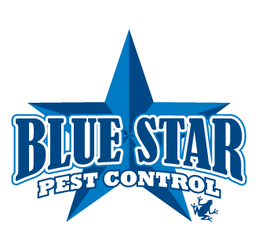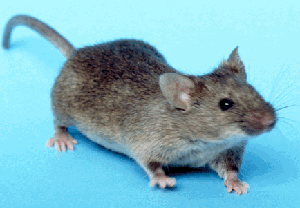Mice
Identification
Mice small, slender, and usually about 3-4 inches in length. They have large ears, small eyes, and a pointed nose. The color range for a given mouse is light brown to light gray. Mice are nocturnal creatures so they are rarely seen by homeowners. The most obvious indicators of their presence are droppings 1/8 - 1/2-inches long, dark, and pointed at both ends. You can also hear them running, gnawing, or squeaking throughout the house. Another indication of a possible rodent infestation is damage to stored food and/or materials. These damages come from the fact that mice use these materials for nesting.
Habits
Compared to rats, mice forage only short distances from their nest – usually 10-25 feet. Their nests are their territory and are usually located within structures and burrows. When food and shelter are adequate, their foraging range may be less than a few feet. Mice are also very inquisitive and known for inspecting new objects put into their foraging path.
Usually when traveling, mice prefer to trek next to walls and other edges. They are easily able to squeeze through extremely small openings narrower than the diameter of a dime. Cracks in the foundation 1/4 inch and larger should be sealed, as should gaps, openings under doors, and any places where utility pipes enter the structure.
Diet
Mice are omnivorous "nibblers" and may make 20-30 visits to different food sites each night. They feed on a wide variety of foods but prefer seeds and cereal grains. They are also fond of those foods that are high in fat and protein such as: nuts, bacon, butter and sweets.
Reproduction
After birth, mice are prolific breeders (sexually mature) after only 4-7 weeks, and are able to have litters every 40/50 days. One liter can contain 4-14 offspring, but on average there are 12 offspring in a liter and are usually birthed at night when it is quiet. The "flea age" is a stage of mouse babies' development, when they jump blindly away from danger - including human hands. Some flea-age babies are also known to bite hands rather vigorously.
As the female ages the risks involved with first pregnancies get higher. The pelvic bones of older females who have not given birth aren't as flexible as those of a younger female. Thus, she may not be able to give birth. However, under normal circumstances, the male mouse will mate with the female very soon after she has given birth, which results in another litter being born when the first one is still only 3 weeks old.
Mice small, slender, and usually about 3-4 inches in length. They have large ears, small eyes, and a pointed nose. The color range for a given mouse is light brown to light gray. Mice are nocturnal creatures so they are rarely seen by homeowners. The most obvious indicators of their presence are droppings 1/8 - 1/2-inches long, dark, and pointed at both ends. You can also hear them running, gnawing, or squeaking throughout the house. Another indication of a possible rodent infestation is damage to stored food and/or materials. These damages come from the fact that mice use these materials for nesting.
Habits
Compared to rats, mice forage only short distances from their nest – usually 10-25 feet. Their nests are their territory and are usually located within structures and burrows. When food and shelter are adequate, their foraging range may be less than a few feet. Mice are also very inquisitive and known for inspecting new objects put into their foraging path.
Usually when traveling, mice prefer to trek next to walls and other edges. They are easily able to squeeze through extremely small openings narrower than the diameter of a dime. Cracks in the foundation 1/4 inch and larger should be sealed, as should gaps, openings under doors, and any places where utility pipes enter the structure.
Diet
Mice are omnivorous "nibblers" and may make 20-30 visits to different food sites each night. They feed on a wide variety of foods but prefer seeds and cereal grains. They are also fond of those foods that are high in fat and protein such as: nuts, bacon, butter and sweets.
Reproduction
After birth, mice are prolific breeders (sexually mature) after only 4-7 weeks, and are able to have litters every 40/50 days. One liter can contain 4-14 offspring, but on average there are 12 offspring in a liter and are usually birthed at night when it is quiet. The "flea age" is a stage of mouse babies' development, when they jump blindly away from danger - including human hands. Some flea-age babies are also known to bite hands rather vigorously.
As the female ages the risks involved with first pregnancies get higher. The pelvic bones of older females who have not given birth aren't as flexible as those of a younger female. Thus, she may not be able to give birth. However, under normal circumstances, the male mouse will mate with the female very soon after she has given birth, which results in another litter being born when the first one is still only 3 weeks old.




